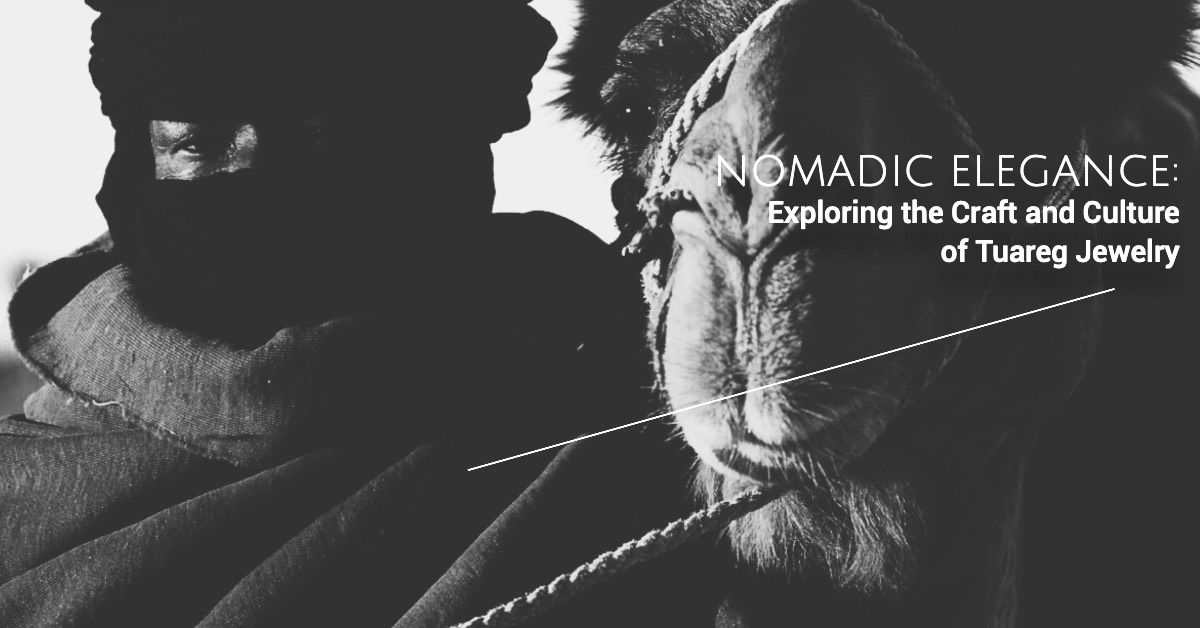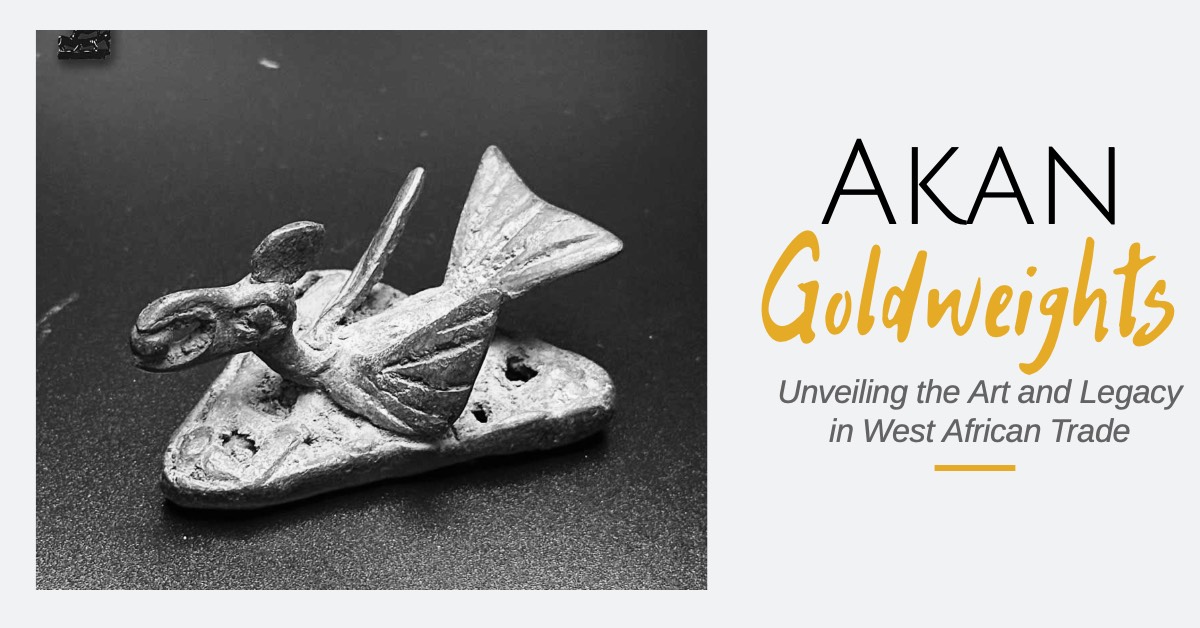Bamileke Kuosi Society
Bamileke Kuosi Society
A Closer Look at the Enigmatic Elephant Mask
The vibrant mosaic of African cultures houses a wealth of traditions, from the esoteric rituals of the Dogon to the spirited celebrations of the Ashanti. Within the Bamileke tribe of the Central African nation of Cameroon, the Kuosi society is a beacon of artistry and cultural richness. This revered sect orchestrates spectacular masquerades, adorning its members with elaborate garb that equates to living, breathing works of art. At the heart of these kaleidoscopic ceremonies are the legendary Elephant Masks, manifestations of the Bamileke’s profound connection to their environment and history.
Unveiling the Origins of the Kuosi Society
The roots of the Kuosi society trace back to the annals of Bamileke history. Originally an association dominated by warriors, membership in the Kuosi has transformed over centuries. Today, it is a network of influential and affluent individuals, bound by the duty of upholding cultural traditions and societal order. The Kuosi remains intricately tied to the throne, often finding royal endorsement and participation at its esteemed gatherings.
The veneration of the elephant within Bamileke lore mirrors its significance in broader African mythology—a symbol of power, resilience, and wisdom. The Kuosi Elephant Masks, with their majestic visage and sprawling fabric flaps emulating the creature’s trunk, are emblematic of the society’s connection to these venerable traits. Their creation and use are central to the Kuosi’s periodic public feasts, wherein the expressions of wealth and power take on a tangible, aesthetic grandeur.
The Mask as a Masterpiece
Crafted with a meticulous eye towards tradition and craft, the Elephant Mask is an intricate feat of artistic expression. Local artisans, often hereditary mask makers, channel their skill and spiritual understanding into every stitch of beadwork and thread of indigo-dyed cloth. Adorned with patterns that tell stories of the Bamileke kingdom, the masks themselves become historical documents, narrating the glories and tribulations of a rich culture.
The weight of the mask, the shimmering beads, and the cascading fabric can transform an individual into a majestic apparition—a living embodiment of ancestral spirits and princely lineage. Each mask is not merely a representation; it is a temporary become—an occasion where the past merges with the present, and the realm of humans coalesces with the supernatural domain.

Members of the elephant society pose for a French missionary photographer in the market place of Bandjoun, c. 1928
Frank Christol, National Museum of African Art, Washington, D.C. and Musée de l’Homme, Paris
The Kuosi Celebration: A Pageantry of Prestige
Once every two years, the Kuosi society convenes to stage its inimitable celebration. Magnates and monarchs gather to witness—and often partake in—the mesmerizing display of wealth and tradition. The significance of this event resonates far beyond the aesthetic; it serves as a barometer for the social and economic prowess of the Bamileke aristocracy.
The Elephant Masks, along with a pantheon of other symbolic regalia, make their grand entrance at the Kuosi celebration, heralding the arrival of new chapters in the community’s narrative. Dancers, masqueraders, and ceremonial figures move in a cadence choreographed by centuries of custom, infusing contemporary life with the hallowed heritage of their ancestral voices.
Collecting and Preserving Bamileke Art
For the contemporary art collector or cultural anthropologist, the allure of Bamileke art—especially the Elephant Mask—is potent. These artifacts encapsulate not just the craft of their makers, but the ethos of the society that birthed them. Acquiring a piece of Bamileke art is akin to possessing a slice of living history, a conduit to the spirit that animates the savannas and hills of modern-day Cameroon.
For those who seek to curate a collection rich in diversity and narrative, the addition of a Bamileke mask carries the weight of its cultural legacy. It is a testament to the ingenuity and resilience of an indigenous tradition in the face of a rapidly changing world.
Conclusion: A Legacy Lived in Fabric and Beads
The Kuosi society and its iconic Elephant Masks are vivid threads in the tapestry of Bamileke culture. Their significance is multifaceted, serving not only as aesthetic expression but as a medium through which identity, history, and myths are communicated to a global audience.
In exploring the enigmatic world of the Kuosi, we unveil a treasure trove of wealth that transcends the material. The artisans who breathe life into the masks, the members who invest them with the spirit of their forebears, and the spectators who bear witness to their splendor, all contribute to a continuum that is at once intimate and infinite.
The Bamileke Kuosi society beckons us to venture beyond the mask’s shimmering veneer and immerse ourselves in the stories it tells. It is an invitation to appreciate, absorb, and perhaps even participate in an ethos that has survived and flourished—a legacy lived in fabric and beads, in dance and celebration. For those attuned to its call, the experience is nothing short of transcendent.
Watch this Video on the Kuosi Society by SmartHistory.
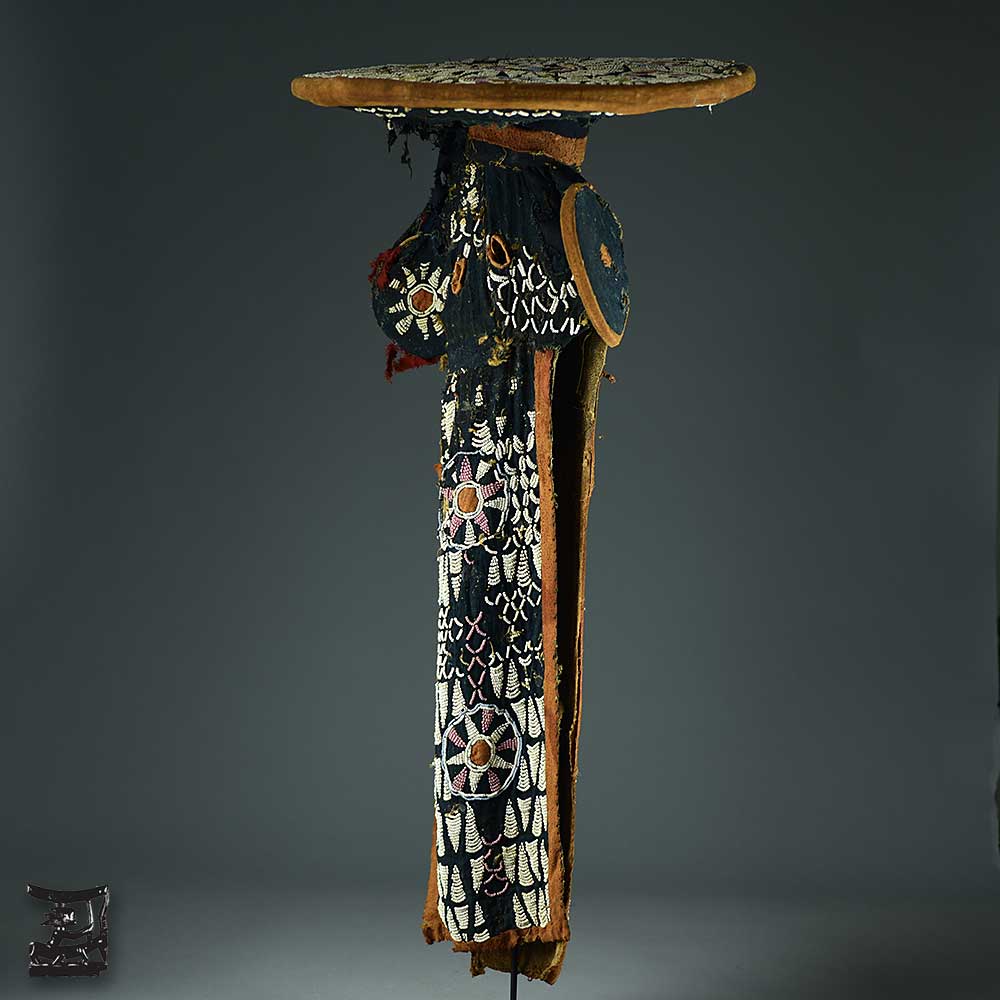
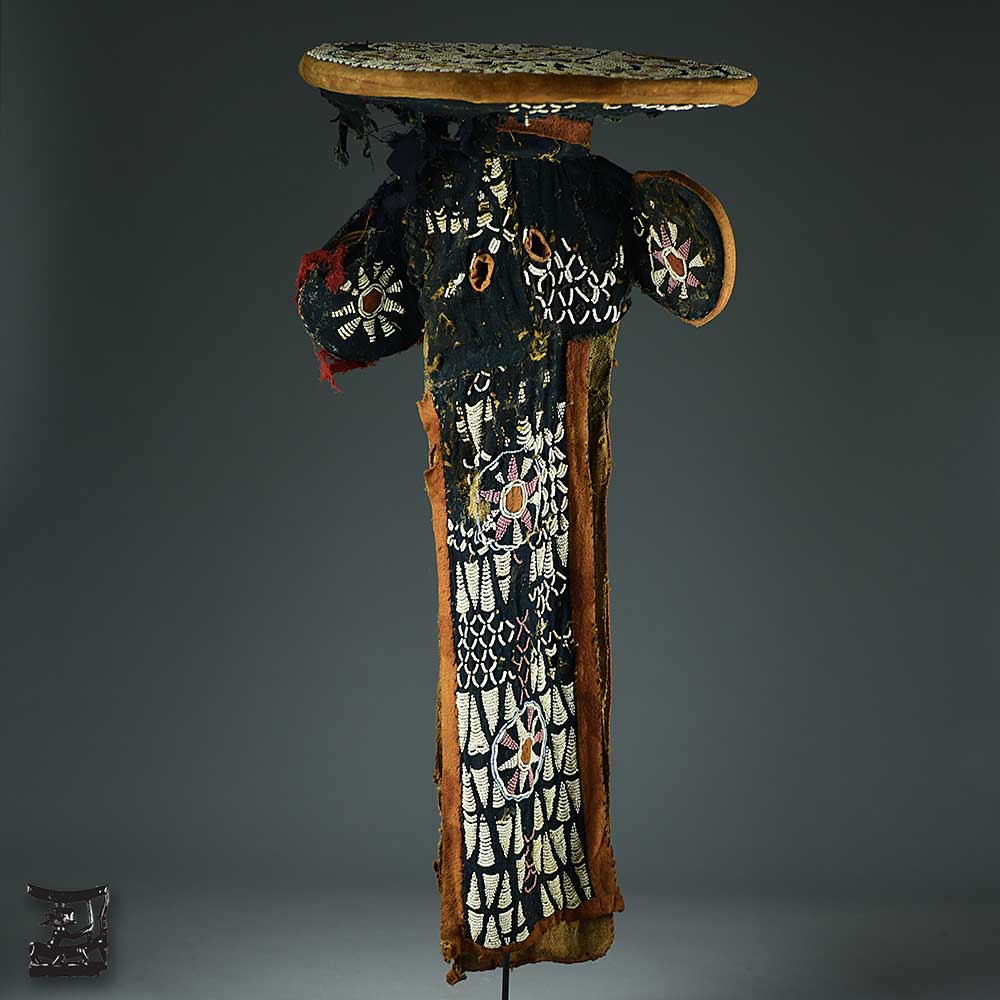
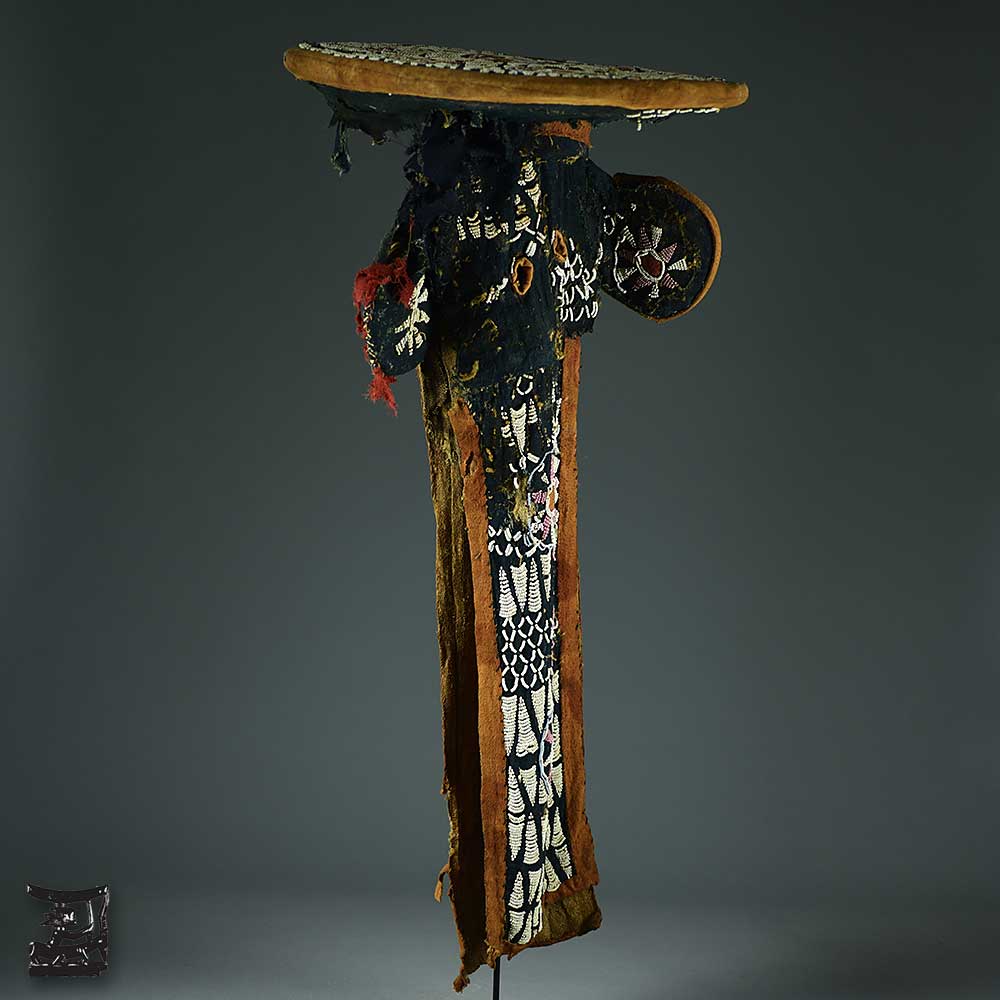
The Elephant Mask images above are from the Jean Pierre Hallet Estate Collection.
Share This Story, Choose Your Platform!
Get updates about our new items, news and information.
We will process the personal data you have supplied in accordance with our privacy policy.


